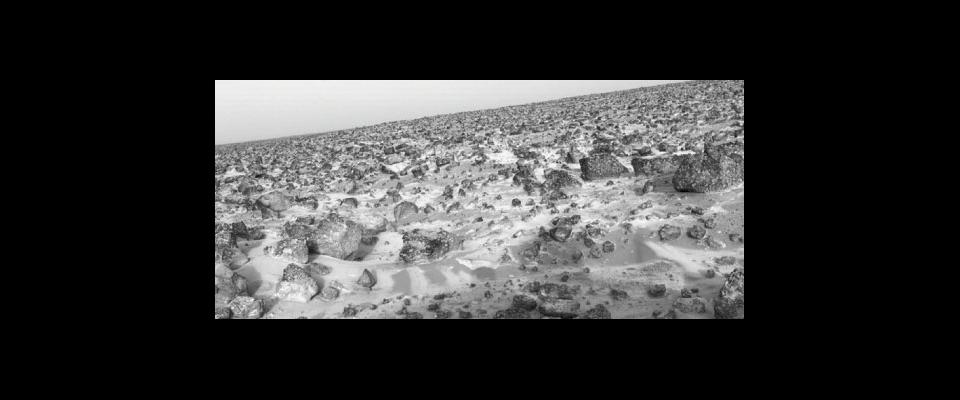Health and Safety Officer, NASA Mars Simulation
This interview has been edited for clarity.
1. How would you describe the route that led you to a simulated Mars mission?
Circuitous. I didn’t enroll at UC Berkeley when I first came up from Los Angeles. I was interested in journalism, so I walked into the Daily Cal offices with a camera in 1996 and asked for a job. I ended up working for the paper, and I also did some freelance science writing. In my spare time, I audited classes. Then I enrolled at Cal in 1997, where I met [professor emeritus of astronomy and physics] Marc Davis, and I became deeply immersed in astrophysics. I also worked at the Berkeley Space Science Lab, and helped build HESSI, a satellite that still flies over Berkeley twice a day. I went with an engineering class to NASA twice to work on space suit designs for Mars missions. So at that point, my career path became clear: Space.
But then my dad, a neurologist, suffered a frontal stroke, and shortly after that Dr. Davis had a hemiplegic stroke. Dr. Davis has largely recovered, but my father was knocked out of his game. Both those medical catastrophes affected me. I was still very interested in space, but I felt I had to do something, to help in some way. So I changed my major from astronomy to cognitive science with a concentration in neuroscience. After graduation, I worked as a researcher at Massachusetts General Hospital and Brown University. I decided to go for my M.D.* I still wanted to go to space, or at least to help other people go to space, but I wanted to do it within the context of practicing medicine.
2. Prior to your Mars mission, you participated in a simulated mission to an asteroid. Can you tell us about that?
In 2015, I was part of a four-person Human Research Program crew that was “sent” to an asteroid aboard an analog spacecraft located in a big building at NASA. The mission took two weeks, and it was uncanny how real the simulation felt. We were strapped in, and when we launched, the analog shook and there was smoke and fire, and you could see the Earth fading away, and later the asteroid approaching. We didn’t pull any Gs leaving the Earth and we weren’t weightless en route to the asteroid—but other than that, we were on a real mission.
3. But for the Mars mission, you essentially spent an entire year locked up in what amounts to a bunker at 8,200 feet** on Hawaii’s Mauna Loa volcano. Didn’t you get a little stir-crazy? Were there conflicts between crew members?
Not a great deal. Everyone is susceptible to their environment, so it comes down to how durable you are and the reliability of your coping mechanisms. If your coping mechanism is daily hikes through the mountains, then you probably shouldn’t go to simulated Mars. But my coping mechanism was the stationary bicycle, and for other crewmates it was the treadmill. In similar situations such as long submarine voyages, there’s a phenomenon known as Third Quarter Syndrome. Well into a mission, people can start showing signs of depression, listlessness, and physical weakness because they’ve mastered their tasks so well and their environment has so little in the way of stimulation that they become bored. That didn’t really happen to us—we were so overworked conducting our various experiments and dealing with basic living issues that we never had time to be bored. In fact, there were times when we suffered from sleep deprivation.
We did have some disagreements, but not about what you might expect. We had some fights over the trash. Because there is no trash on Mars. Nothing is wasted. Specifically, I remember a squabble over some empty jars. I wanted them for culturing kombucha, and other people wanted them for other things. We coveted the trash, because it was a real and valuable resource. You took care of that empty jar, because its nearest replacement was millions of miles away on another planet.
4. What was your initial impression on “returning” to Earth?
Just how lucky we are to have this planet, one that’s so rich in soil and water and forests and wildlife. And atmosphere, air pressure, pollinators, and bacteria, for that matter. On Mars, there are no bacteria or pollinators. You need bacteria for successful agriculture, so we’ll have to introduce them in our growing cultures, and we’ll have to hand-pollinate all the plants.
5. The current goal for sending people to Mars is sometime in the 2030s. Is that realistic? You’ll be in your mid-50s then. Do you think you have a shot at getting on a crew manifest?
If we had mustered the will, we could have been to Mars by now. And if we want to get there by the 2030s, we have to get a move on. But it’s certainly possible. And my age may turn out to be an advantage. Astronauts will be exposed to a lot of hard radiation in transit and even on the Martian surface, and older people don’t have to worry about reproductive impacts. Also, the older you are, the less chance you have of getting appendicitis. You can prophylactically remove appendixes but that creates other problems, and a case of appendicitis on board a spacecraft would be deeply problematic and a threat to the mission.*** So I like to think I have a chance of getting to Mars. But it’s not important that I go. What’s important to me is that I’ve contributed to getting us there—the human race. One way or the other, we’re going to Mars.
Corrections:
*The article originally posted erroneously stated that Ms. Gifford had received a space medicine fellowship prior to earning an M.D.
**The elevation of the “bunker” was originally misstated in the article. It’s at 8,200 feet, not 8,800 feet.
***The article originally posted erroneously stated that one can’t prophylactically remove appendixes. It should have read “one can prophylactically remove appendixes.”





















